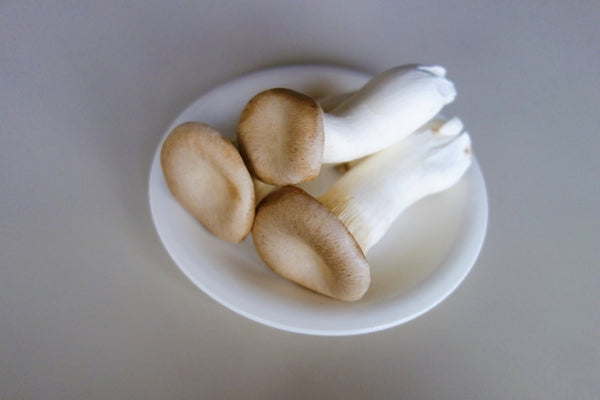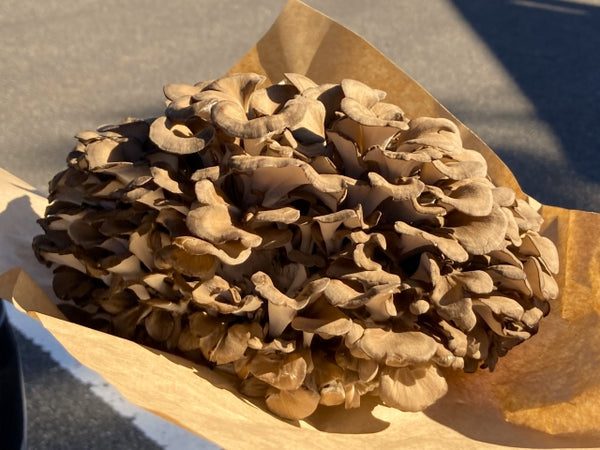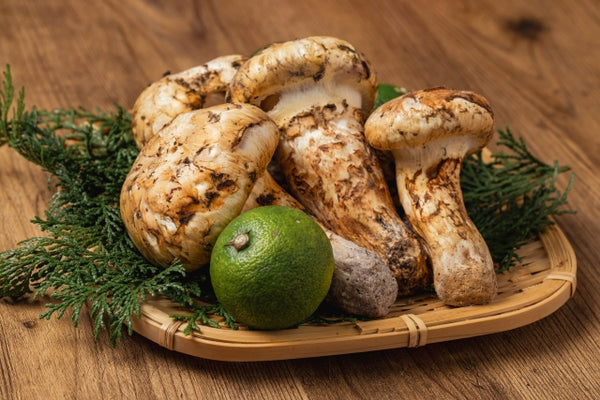Guide to Japanese Mushrooms

Japanese mushrooms have been gaining widespread attention for their health benefits and their potential as meat substitutes in plant-based diets. Japan boasts a rich variety of mushrooms and a long-running foraging culture that dates back centuries. As such, fungi play a crucial role in Japanese cuisine, serving as a source of umami in dashi and providing a meaty texture in shōjin ryōri (Buddhist cuisine).
Here are some of the most popular mushrooms found in Japanese cuisine:
Nameko
These slimy, clustered mushrooms may not appeal to everyone at first glance, but are a popular seasonal ingredient from September to November, making their way into miso soups and even tempura dishes!
Enoki

Globally found from Europe to Africa, enoki mushrooms are a staple in Japanese dishes due to their easy cultivation. They require careful cooking to avoid burning and are typically added to soups and stews for their delicate flavor, though they can also be fried for a crispy treat.
Eringi (King Oyster Mushroom)

Originally coming to Japan from Europe in the 1990s, these interesting mushrooms have a unique crunchy texture that some liken to raw abalone or scallops. They don’t have a very strong smell or taste, making them a versatile choice for those new to mushrooms. Due to their dense fiber content, cutting them vertically is a popular technique that makes them easier to marinate, while cutting them horizontally into round discs maintains their distinctive texture.
Kikurage (Wood Ear Mushroom)
While there are different types of this crunchy mushroom found across Japan and throughout the world, the arage kikurage is most famous in Japan. It is a staple in Japanese-style Chinese cuisine and ramen dishes.
Maitake

Readily available through modern production but rare in the wild, these clusters of almost leafy mushrooms are known for their crisp mouth feel and ability to withstand high cooking temperatures, making them a versatile ingredient in the kitchen. They can be marinated and are perfect for sautés and stir-fries!
Bunashimeji
Another widely cultivated mushroom, bunashimeji can be found in the wild sprouting from fallen logs and trees in the Japanese countryside during the fall. Both brown and white varieties are cultivated today. High in potassium, vitamin D, and dietary fiber, these mushrooms are an umami powerhouse often added to soups and stews to add extra depth as they simmer away.
Shimeji (Beech Mushroom)
Known for their crunchy texture and savory taste, shimeji are versatile and appear in stir-fries, soups, and even tempura dishes. They usually come in little clusters that can be easily broken apart and trimmed in no time, making them perfect for low-prep recipes.
Shiitake
Eaten in Japan since the Kamakura period (1185-1333), shiitake is one of Japan's most well-known mushrooms. They’ve been cultivated since the 1600s, which was also when a method for drying shiitake was first invented. These umami-rich mushrooms are perfect for creating robustly-flavored vegan dashi or adding a meaty texture and flavor to sautés.
Matsutake

Celebrated since the 8th century, as documented in the ancient Japanese poetry collection "Manyoshu," matsutake mushrooms are revered for their distinct aroma, described as the “Scent of Autumn.” They are a luxurious addition to dishes, whether grilled over charcoal, steamed, or cooked with rice in takikomi gohan recipes.
This brief overview of Japanese mushrooms is only a snapshot of the rich and diverse world of fungi. May it inspire you to incorporate more mushrooms into your meals!
Interested in trying more Japanese mushrooms? Shop our selection of mushroom-based products!
About the Author:
 Kevin Kilcoyne
Kevin Kilcoyne



